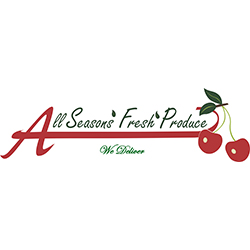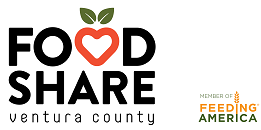Retailers can expect an average California citrus winter season, said Casey Creamer, president and CEO of the nonprofit trade association California Citrus Mutual.
Creamer said the overall production is variety-dependent, and it's early into winter citrus harvest.
“There's generally a good crop on the trees,” he said.
Dave Rooke, senior vice president of sales with Wonderful Citrus, said a strong summer citrus season with good quality sets the state up for its winter season. Growth in mandarins helped fuel a strong summer season.
“We're growing this summer. It's largely driven from the right quality at the right time,” he said, “Mandarins represent about 43% of all citrus sold.”
Growing conditions for the winter citrus season have been ideal, Creamer said. However, later in the season the state experienced some extreme heat, which meant the internal maturity of the fruit progressed.
“We had a lot of heat units this year,” he said. “We need the cold, as well, to help the crop color up.”
Creamer said color is especially critical with navels, but the heat has been — for the most part — manageable for the state's growers, balancing the internal fruit quality with the external color consumers expect.
Another challenge, Creamer said, is that the warm summer weather has affected the crop size.
“That may bring some of the projections on volume down, but it's too early to tell,” he said. “The size is something we manage through our picking, and which blocks we pick. Nobody sees that on the customer end.”
Rooke expects a more normal winter citrus crop this season compared with last year's crop, “if normal is anything anymore.”
“Last year we had some size structure issues, some quality defects on navel oranges,” he said. “Mandarins had some smaller size structure. This year across the board, mandarins, lemons, navels — the overall supply feels a lot more of what I'll call normal. Supply should be good. Quality is more normal.”
Trends
It's no secret mandarins are leading the citrus category. Creamer said he's seen this trend reflected in shifts in citrus acreage.
“The industry is constantly responding to the marketplace, and it shows up in shifts in acreage planted,” he said.
In the last decade, Creamer said the state has seen a 13% decrease in navel acres planted and a 26% decrease in valencia acres. He estimates that to be between 25,000 acres and 28,000 acres.
As valencia and navel acreage declines in the state, Creamer said, they're being replaced by mandarins, which have increased by about 18,000 acres during that time.
“Those are some significant shifts in trends,” Creamer said. “It's also a really good thing for navel growers and valencia growers because the supply came down. It's actually made it a little bit easier to make it work financially given the current market dynamics.”
Joshua Yahr, senior brand manager for Wonderful Citrus, said consumers seeking functional snacks help drive that growth in mandarins.
“We continue to see consumers move towards wanting functional snacks that are both healthy and convenient,” he said. “Mandarins, of course, are in a sweet spot for that. So, we're doing our part to continue to drive that demand.”
Yahr said Wonderful Citrus will launch a national campaign for its Wonderful Halos to position mandarins as an easy snack for consumers.
Rooke said the citrus category is also fueled by growth in limes and seedless lemons. He estimates the lime category has experienced double-digit growth for Wonderful Citrus since 2020. And the growth Wonderful Citrus has seen in lemons has been entirely in seedless lemons.
“Typically, on the lemon category as a macro, about 55% of it is sold bulk, 45% of it is sold bags,” he said. “Within bags — that 45% — Wonderful Seedless Lemons is driving 100% of the growth. As a lemon category in general, that's up a little bit.”
Jesse Silva, vice president of sales for Kings River Packing, said the company leverages data from Circana to help determine its future portfolio plans. And, along with growth in its mandarins, the company has also seen growth in cara cara oranges and Raspberry Oranges.
“There are still a lot of growth opportunities and markets for citrus,” he said.
Silva said organic production continues to be a conversation with Kings River Packing's retail partners, however, there are challenges in growing organic fruit and returns for organic fruit need to be higher to offset those additional production costs to growers.
“[Organic] growth overall is up, but long term there seems to be a cap to how much can be marketed as organic citrus,” he said.
Cassie Howard, senior director of category management and marketing at Sunkist Growers Inc., said consumers' interest in adding citrus to recipes is helping grow the citrus category overall. Consumers, too, are turning to citrus for its health benefits as citrus fiber improves food texture and reduces fat content.
“We are finding that consumers are using more citrus products in creating recipes and beverages, such as grilling grapefruit and using blood oranges to enhance recipes because of the unique hint of berry flavor,” she said. “Citrus is also being incorporated into vegan and gluten-free recipes.”
Challenges
Creamer California Citrus Mutual said growers face competition from cheaper imports, which has made it tough for California citrus growers to remain profitable.
“We would want to sell more,” he said. “I think we have the ability to sell more. There's a domestic market for it. There's an export market for it.”
Creamer points to a USDA report that says the U.S. now imports more food than it exports.
“One of the biggest challenges is the amount of fruit that's coming in from other countries. That's hurting that profitability [for growers],” he said.
As citrus imports increase and U.S. citrus exports decrease, growers also face challenges with increased costs to grow and harvest the fruit.
“Your costs are going up, and the prices that growers receive aren't keeping pace with that,” he said.
Creamer said the whole fresh produce industry faces challenges with increased costs.
“Retailers are facing their own pressures and trying to get people to buy with shrinking household budgets,” he said. “I would just say we're in this together. We represent the growers, and we want to make sure what they're doing is sustainable. It is a major challenge that we're struggling with to remain competitive, and not everybody's surviving.”
While huanglongbing — also known as HLB and citrus greening — is in the state, the debilitating disease vectored by the Asian citrus psyllid has not been found in a commercial grove in California. While the state's quarantine boundaries get closer and closer to commercial groves, Creamer said the state's citrus growers, the California Department of Food and Agriculture and the USDA have taken the threat seriously and worked to scout for and educate homeowners with residential citrus trees.
“Today, there's still not a commercial find of a positive tree in California, something we remain very concerned about,” he said. “It feels like the quarantine boundaries are expanding and getting closer and closer to commercial roads. To date, we've had a very successful program through the partnership between the growers in the state, the CDFA and the USDA to ensure that we keep the effects of HLB out of California commercial citrus growth.”

What retailers need to know
Silva of Kings River Packing said retailers should know that as the season begins for early grapefruits, lemons, navel and clementine mandarins, the company is seeing higher than normal Brix levels.
“It's setting up to be an exceptional eating season for California fruit,” he said.
And yes, there may be some sizing issues on early navel oranges, but Silva said he expects that to level out in the next month and a half as midseason varieties begin to harvest.
“Most other commodities are sizing decently, and we expect strong quality, great sets fueling good promotions most of the season,” he said.
Howard said smaller-sized fruit in the early part of the season provides retailers with opportunities for promotions on 4-pound navels, 3-pound cara cara oranges and 2-pound blood oranges.
“We are also seeing a higher fancy grade ratio for those customers who prefer bigger bulk displays,” she said. “The previous season had a big swing towards large fruit, some of the biggest fruit in terms of its size in recent history.”
Merchandising ideas
Howard of Sunkist said cross-promotion is a great way to help drive sales in citrus and provides opportunities for impulse purchases and additional use ideas.
“Retailers can add display bins in the pharmacy section or near a recipe ingredient that includes citrus, including the seafood or alcohol sections,” she said.
Howard said retailers can also help boost sales by educating consumers on the health and nutrient benefits of citrus and the flavor profiles of citrus fruit that consumers may be less familiar with — for example, pummelos.
“Retailers can educate their shoppers on how to peel, open and eat it,” she said. “[Pummelos] would be the ideal citrus fruit to feature in the weekly circular, in addition to visible signage.”
Howard said Sunkist has POS materials and QR codes that can drive consumers to the Sunkist website for recipes, nutritional information and more.
“Sampling is another excellent way to have consumers try various citrus flavors,” she said.
Silva said eye-catching displays also help drive citrus category sales.
“The best way to create excitement around citrus is to build large, fresh displays and showcase a wide variety of citrus,” he said. “Signage is always a plus, bringing the grower family story with the displays. This creates a memorable experience for the consumer.”

















